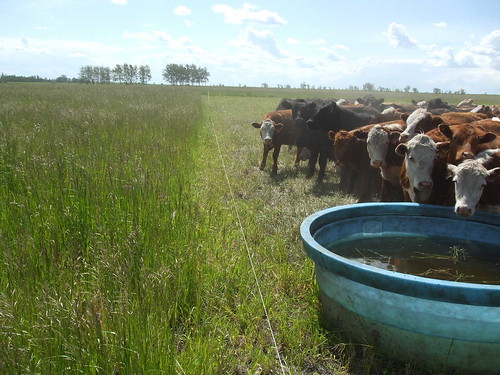Desertification
is the process of a fertile area of land becoming increasingly dry to the point
that it loses its water sources and its vegetation and wildlife. This is
typically caused by climate change and human activity, such as overgrazing,
deforestation and tilling the land for agriculture. Desertification is a
problem that needs to be addressed soon.
 |
| The Sahel in Africa, one of the most environmentally degraded areas on earth. |
In
Alan Savory’s TED talk, he describes his method of reversing desertification by
using herds of livestock to mimic nature. These herds would help promote the
biological decay of the grasses and plants by stomping, defecating, chewing,
and spitting on them. It would also promote the soil’s ability to absorb water.
In his TED talk, he claims that the livestock would not require any extra feed
to compensate for the limited natural resources available to the livestock on
the dried-out land.
Unfortunately,
as pointed out in James McWilliams’ article All
Sizzle and No Steak, Savory has not had much luck reproducing his results
in other areas of the world. McWilliams stated that “whereas Savory insists
that his methods will revive grasses, ‘the most complete study in North
America’ on the impact of holistic management on prairie grass found ‘a
definite decline’ of plant growth on mixed prairie and rough fescue areas.”
McWilliams also refers to other studies that have pointed out that Savory’s
methods are either no better than other methods for management of
desertification, or that his methods have actually led to desertification in
some areas.
I
think that if Savory’s methods work in certain areas, then he should continue
to implement them there. The fact is that these methods are not working
everywhere. We should focus our efforts on ways to reverse desertification by
looking at each area of land individually. Not all desertification is caused by
the same thing, so one method will not work for each area. Savory believes that
his methods will work in all areas, yet not all areas affected by
desertification have the same climate, which is most likely why his methods are
not reproducible in all areas. Desertification is definitely a problem that
needs to be addressed. Savory’s methods might work in some areas, and should be
used in those areas. Focus now needs to be shifted to new methods that will
work in other areas.
http://www.ted.com/talks/allan_savory_how_to_green_the_world_s_deserts_and_reverse_climate_change.html
http://www.slate.com/articles/life/food/2013/04/allan_savory_s_ted_talk_is_wrong_and_the_benefits_of_holistic_grazing_have.2.html
http://planet3.org/2013/03/17/alan-savory-freeman-dyson-and-soil-sequestration/
http://oceanworld.tamu.edu/resources/environment-book/desertificationinsahel.html




















